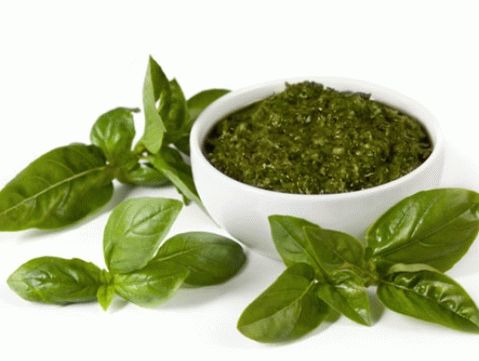
Perhaps one of the oldest sauces in the world, which is still remains popular in all corners of the earth – this is pesto sauce. It is believed that the Persians were the first to prepare it, but in modern Culinary pesto sauce is an invariable attribute of Italian cuisine. Him Basil, parmesan and olive oil are the basis, and unique taste is created with pine nuts and garlic.
Pesto is prepared only with a mortar and pestle. Kitchen harvesters and other modern devices will not give the same result like traditional appliances. In order to cook modern pesto, green basil leaves, olive needed highest quality oil and hard parmesan, which Italians love to call Parmeggiano Reggiano.
The name of this sauce comes from the Italian verb pestato, which means “crush, trample”. From the name it is easy to guess about the method of making pesto. Besides green, there is also red pesto – in its preparation are used Sun-dried tomatoes. As a rule, the “red version” of such a sauce served with pasta or lasagna, but Italian chefs also add it to soups, make toasts with it and find plenty other uses for this sauce.
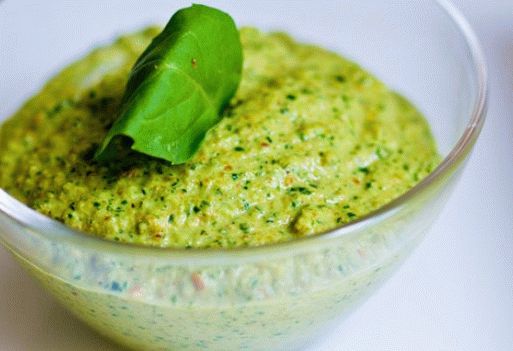
The origin of pesto sauce
The history of this popular sauce begins in the Liguria region on northern Italy, and its first mention dates back to the Roman era empire. Some sources say the recipe for the sauce was known. in Genoa. Genoese sailors on a long voyage they took pesto sauce with them. Fresh herbs spoiled quickly, and the sauce could be stored much longer. Genoa sailors were easily recognized in any port – they were given out by a bright and unusual smell of basil.
It is believed that such a sauce could have been prepared before the creation of the Roman Empire. Then its basis may not have been basil, and cilantro and parsley. Be that as it may, written There is no evidence of this, but the first mention of the famous sauce in literature dates from 1865. Giovanni Baptiste Ratto mentions him in his book “Cooks of Genoa.”
Ingredients
Basil is the base of pesto sauce. This is a fragrant plant. comes from India, where it began to be cultivated in ancient times time. It is believed that later it came to North Africa, and from there to Italy. In Russia, basil with purple leaves, which are abundantly grown in the Caucasus and the Balkans. But it should immediately be clarified that for making pesto sauce such the grade is better not to use. Italian cooks choose for this green basil. It is especially popular in the aforementioned Liguria, and also in Provence in the south of France. By the way, in Provence there is analogue of pesto sauce, which is prepared with parsley, a variety of varieties of cheese, but without the addition of nuts.
So, for a classic pesto you need a green basil, preferably from the Pra region, Ligurian olive oil direct spin cycle. Pine nuts, which are known as pineapple seeds. As for cheese, two varieties are preferred – the above Parmeggiano Reggiano, or Grana Padana. Also Fiore Sardo is required – a popular sheep cheese variety in Italy. Garlic in cooking must be dried. Recommended use coarse sea salt.
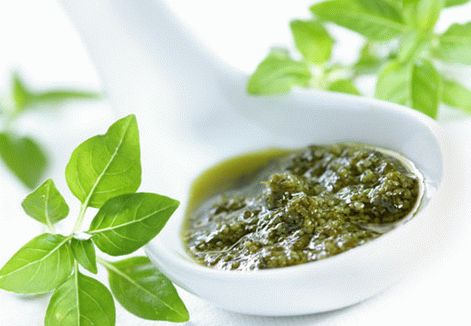
Sauce making
Young basil leaves need to be carefully washed and dried. It is important not to damage them – this can cause oxidation and blackening. In the process of cooking, it is better to take a mortar from marble and a wooden pestle. With their help, buds of cloves are pushed, dried garlic and sea salt. After that leaves are added. basil, grind them to the formation of gruel. Next is necessary add cheese grated on the finest grater, and after thorough mixing in the formed mass is added olive oil. Good pesto should not be too liquid, but also excessive density is not the best indicator of quality. Ingredients should add, guided by your taste.
Naturally, after reading this recipe, everyone can the question arises – where does the severity of the choice of provinces come from? areas producing certain ingredients? Why products from these areas is it preferable for making sauce? After all, many Italian cookbooks do not give certain proportions, only geographical notes on where it is better to take basil leaves or nuts. And the answer is more than simple – each Italian cook has his own recipe for pesto sauce. One of the main features of Italian cuisine is that each the culinary specialist keeps his own recipe secret and protects his traditions. Only guided by experience and taste, the chef will create own, unique sauce. At the culinary masters in Italy has no habit of weighing basil leaves or measuring out amount of oil. Cooking is intuitive. For this need experience, for this you need a sense of taste.
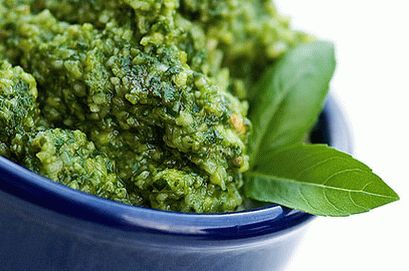
Of course, an ordinary Russian housewife will not be easy to make pesto sauce according to the original recipe – not in everyone the store has a basil from the Pra region and Italian cedar nuts. What to do in this case, how to find a replacement for the main ingredients that leave untouched?
Firstly, one must be extremely attentive to the basil itself. Using purple leaves is highly undesirable, they can give sauce ugly dark color and aroma too strong. Green Basil from the Pra region is not in vain called lemon or mint – it distinguished by soft shades of taste. If you can’t find the basil, from Pra, Italian chefs add to ordinary green basil a little mint.
If no parmesan was found in the nearest supermarket, you can replace with any European copy, but not with Russian or Caucasian cheeses! Cheeses familiar to domestic consumers only distort the taste and aroma of the sauce. As for olive oil, only the best should be chosen. To determine the quality, just try the oil on the tongue. As they say italian cook, it should not “leave a nail in the throat” – that is, not taste bitter. Sauce oil should be fragrant, silky.
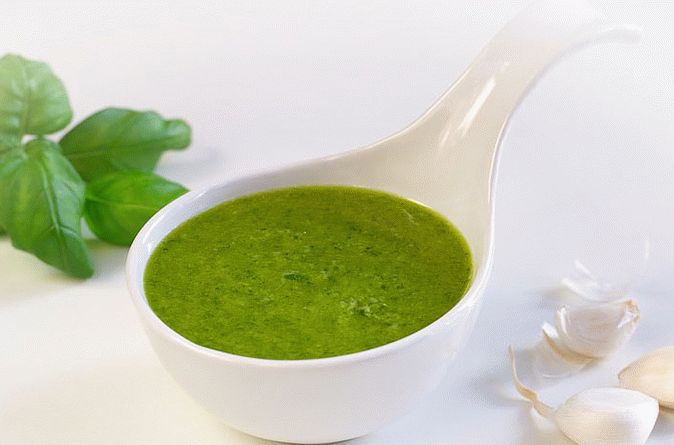
Next, pine nuts. For pesto Siberian can also be suitable. pine nuts, if you can not find the seeds of Italian pine. The main differences between these two species in size. Italian seeds pine trees 3-4 times larger than nuts of Siberian cedar. Not recommended replacing them with walnuts – this can give bitterness to the sauce.
As for sheep cheese for pesto sauce, you can to exclude in the absence thereof in the markets and in supermarkets – even Italian masters do not always use it. But if on the table will be Fiore Sardo cheese, you can add it to the sauce, replacing 1/3 of the volume of parmesan.
Italian cooks use garlic from Vessalico. But say how it differs from, say, Ryazan garlic, is quite difficult. So in cooking it is even recommended to use domestic garlic to emphasize the individuality of the dish.
The last but not least ingredient is sea salt. She is must be coarse, because large crystals help to grind leaves better. Sea salt also preferable in terms of mineral content, it is more beneficial for body than ordinary table salt.
Also in Italy, some ingredients are added to pesto to taste. cooks. For example, mint softens the taste of the sauce and gives a special shade the aroma. For the same purpose, add coriander, olives and even mushrooms.
How to make pesto in other countries
It’s natural that such a popular sauce has many variations around the world. For example, the previously mentioned Provencal version, which even bears the similar name pistou. Her the difference is in the use of parsley and other types of cheese (the French are not limited to one parmesan and sheep’s cheese, but experiment with 4-5 species at the same time). Instead of cedar French nuts are more likely to use grated almonds, but more often do without any nuts. Usually used pistou sauce as a dressing for various types of soup. It is added to the finished soup, or served separately from the soup so that everyone can add the sauce to your taste. But in the USA they are experimenting even bolder – they are using dried tomatoes and hot pepper varieties. American cooks add walnuts to the sauce, do the same in Latin America, and in Russia.
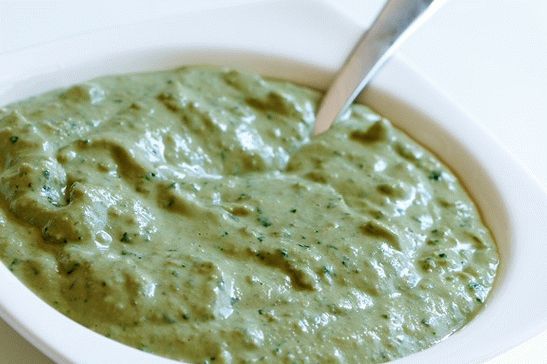
Cooking Tools
Every housewife who starts cooking pesto sauce the question may arise – why is a mortar necessary, when is there such a variety of convenient kitchen appliances? there is several reasons to use classic cooking aids. Firstly, pesto sauce has a certain cooking technique, which you must adhere to. No blenders and kitchen harvesters will not give the result that the ancient cooks achieved with using mortars. The blender crushes the leaves, scattering their debris on the edges of the dishes, and instead of a homogeneous mass, a mixture with pieces of leaves floating in it. In addition, when exposed metal sauce awaits oxidation and darkening. Work with a mortar – another matter, leaves are crushed uniformly, color remains nice green.
Pesto sauce is not kept in the refrigerator for long. The problem is that he quickly loses taste, stagnates, and this May cause mold. In order to keep the sauce on for a while, it is recommended to use sterilized glassware.








